- Home
- Learn
- Healthcare
- Best Phreesia Alternatives in 2025
HEALTHCARE
Best Phreesia Alternatives in 2025
Contents
When it comes to patient intake and engagement, Phreesia is one of the most recognized platforms in healthcare. In fact, the platform is used by thousands of healthcare organizations to streamline their front-desk operations, automate their paperwork, and improve patient experience.
Phreesia’s strength lies in the range of tools it offers. Its suite includes digital check-in, payment automation, insurance verification, EHR integration and more – making it one of the more full-featured platforms in the domain.
But that same depth can be a drawback for smaller practices with more specific needs. Some find the platform expensive relative to their size or patient volume. For others, the software can feel overwhelming for their day-to-day operations.
If that sounds familiar, this guide is for you. Today, we take a closer look at the best Phreesia alternatives in 2025.
Every platform listed here is HIPAA-compliant. They are also built to support modern patient workflows and are flexible enough to serve practices of different sizes, without overengineering the basics.
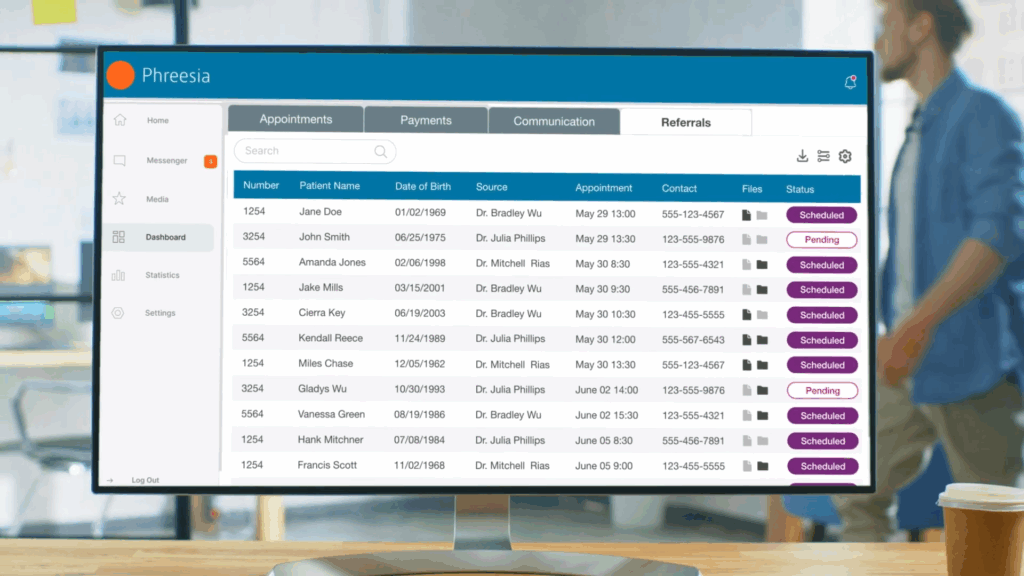
Let’s step back and look at what matters most in a patient intake and engagement solution as an alternative to Phreesia.
At minimum, any platform handling patient data must meet HIPAA requirements. Furthermore, look for tools that offer audit trails, data encryption (both at rest and in transit), access controls, and signed Business Associate Agreements (BAAs). If you’re in a state with additional privacy laws, like California or New York, be sure the platform’s data practices meet those requirements too.
This one’s obvious for a tool handling patient intake. The best tools make digital intake easy for both patients and staff. This includes mobile-friendly check-in, pre-visit forms, e-signatures, insurance card uploads, automated reminders and more.
Smooth onboarding helps your practice reduce wait times, prevent manual entry errors, and make a strong first impression on patients.
Intake software works best when they connect with the rest of your tech stack. Primarily look for platforms that integrate directly with your EHR or EMR. Billing integration is another key consideration if your team wants to capture co-pays, verify insurance coverage, or flag missing information.
The more connected your systems are, the easier the flow of data between them.
Make sure the platform can manage location-specific workflows and branding. Also verify that it supports user roles and permissions across different teams.
Some tools are great for solo practices but not fit for complex workflows. If you’re expanding (or plan to), choose a platform that can grow with you.
Finally, the cost. Some platforms price based on volume while others use flat-rate tiers. Either model can work, but what you want is transparency. Make sure you understand what’s included in the base package, what counts as an add-on, and whether long-term contracts are required.
A lower sticker price can be misleading if it comes with limited support or surprise fees down the line. So, clarity matters when it comes to cost.
Having covered the essentials, let’s dive into the best Phreesia alternatives for 2025.
| Phreesia alternative | Best features | Average Rating | Price |
| LeadSquared | Robust healthcare workflow automations, integration with EHR/EMR and payment verification tools, scheduling and digital intake | 4.5 | Pro – $60 per user/month Super – $100 per user/month |
| Luma | Appointment scheduling, waitlist management, 2-way messaging tools | 4.8 | Custom pricing |
| Tebra | Digital intake forms and kiosks, self-scheduling, integration with healthcare tools | 4.1 | Custom pricing |
| Mend | Online video conferencing, AI algorithm that predicts patient no shows, EHR integration | 4.7 | Custom pricing |
| Klara | Digital intake, insurance collection, Video visit options | 4.5 | Custom pricing |
| Nexhealth | Real-time online scheduling, analytics dashboard, robust EHR integrations | 4.8 | Custom pricing |
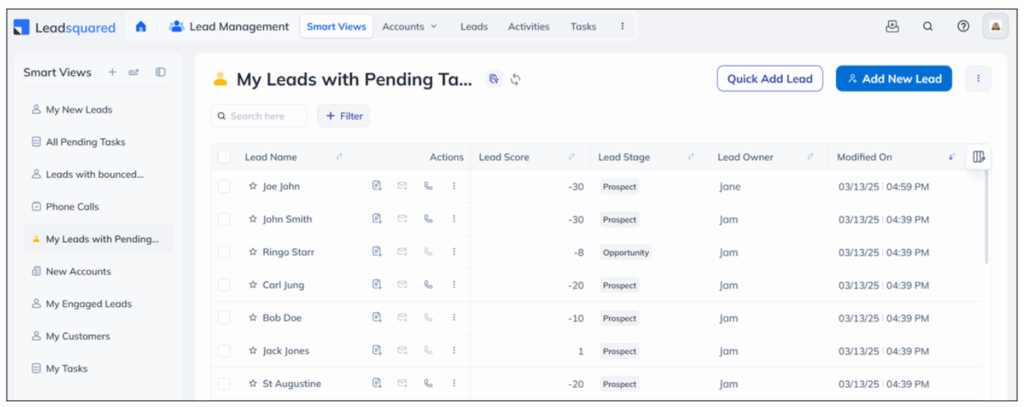
A healthcare-focused CRM that also doubles as a patient intake and engagement platform. LeadSquared offers practices digital and telephonic intake, healthcare workflow automation, patient journey tracking, referral management, and secure payments, while maintaining strict HIPAA compliance. It’s aimed at clinics of various sizes, from small practices to hospitals and diagnostics centers.
Some users report that the tool can sometimes glitch or lag.
Pro – $60 per user/ month
Super – $100 per user/ month
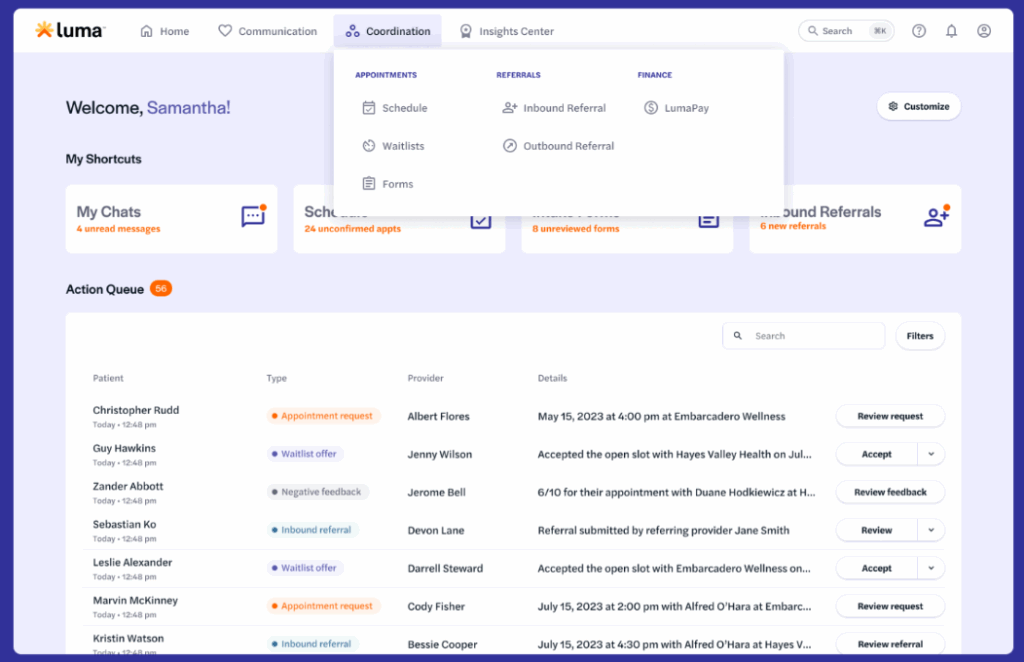
Branding itself as a “Patient Succes Platform”, Luma Health focuses on digital patient intake, appointment scheduling, two-way messaging, telehealth, and post-visit follow-up. Luma Health is used by over 600 health systems, and its use cases scale from solo clinics to enterprise networks.
Custom pricing.
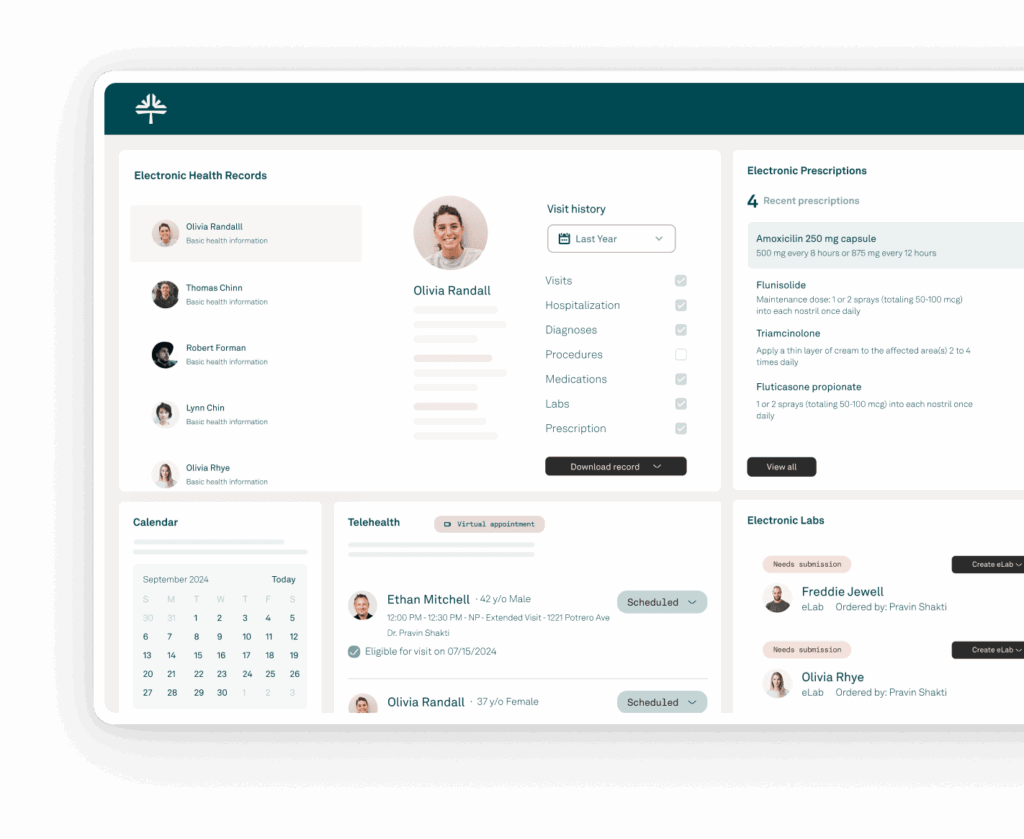
A unified healthcare platform formed by merging Kareo (EHR + billing) and PatientPop (patient acquisition & engagement). As a combined tool, Tebra offers a wide range of healthcare solutions including digital and in-office intake, online scheduling, two-way messaging, telehealth, billing automation, practice growth tools and more. It’s good to know that Tebra is designed especially for small-to-mid-size practices.
Users also praise customer support: “The main thing for me is that every time I need help, someone actually answers the phone, and they always help me figure out what I needed and even go beyond that to give other pointers or help.”
Custom pricing.
As a HIPAA-compliant patient engagement and telehealth platform, Mend primarily focuses on the behavioral and mental healthcare domain but also adapts to other specialties. It covers workflows associated with the full patient journey including scheduling, digital intake, secure video visits, billing, post-visit follow-up, and so on.
Users also praise how convenient the tool is for appointments: “More convenient than making an appointment at home on a weekend.”
One user said: “Sometimes it’s hard for a patient to connect and we will connect a different way”.
Custom pricing.
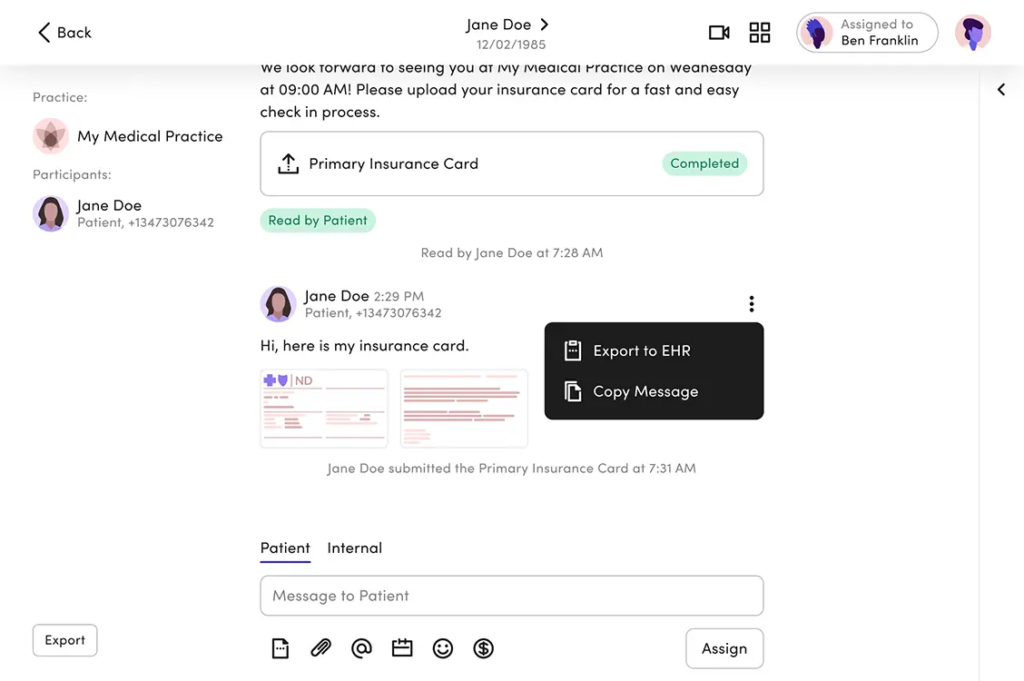
A HIPAA‑compliant patient engagement platform that focuses on streamlining healthcare communication before, during, and after appointments. Klara brings within its system a truckload of features including secure messaging, digital intake forms, scheduling, reminders, video visits, and more.
Custom pricing.
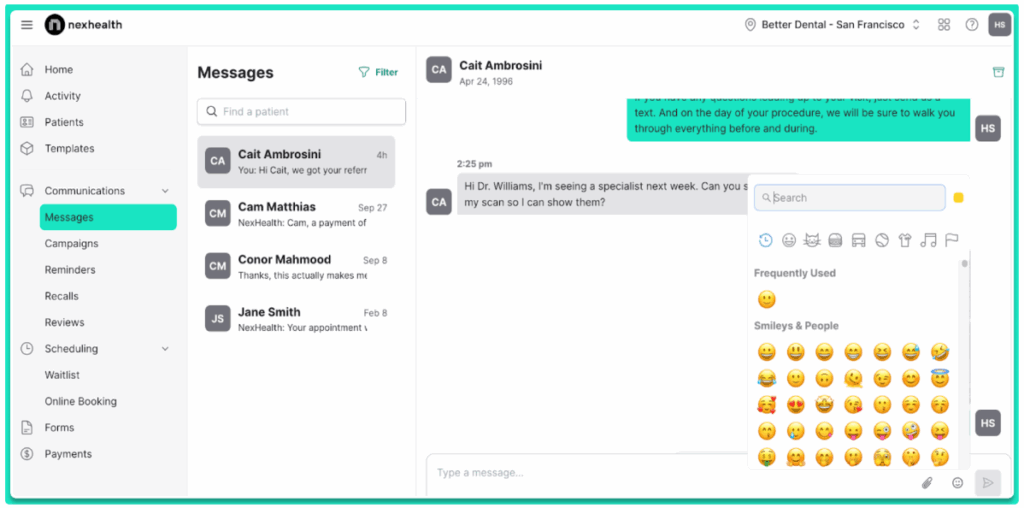
A modern patient experience platform that focuses on digital intake, online booking, secure messaging, payments, and analytics. Nexhealth helps healthcare practices streamline administrative workflows across clinics of various sizes. It also offers integration options with existing EHRs and billing systems.
Custom pricing.
Choosing the right patient intake and engagement platform hinges on a lot of factors. How well the tool fits the scale, your workflow, and specific needs of your practice all play a part. While Phreesia remains a good patient intake solution for large organizations with complex front-desk operations, it can feel oversized or cost-prohibitive for smaller practices.
If you’re looking for a well-balanced platform that delivers modern patient intake, effortless engagement, and enterprise-grade scalability without overcomplicating things, LeadSquared is worth a closer look.
Book a quick demo to see how LeadSquared can help your practice simplify patient workflows and reduce manual overhead.
Patient intake software helps collect information like personal details, medical history, insurance, and signed forms—before the patient even arrives. Instead of filling out paperwork in the waiting room, patients complete everything online or through their phone. This saves time for staff, reduces data entry errors, and improves accuracy. It also creates a faster, more organized experience for patients and clinics alike.
Yes, many modern intake platforms come with built-in appointment reminders, real-time check-in, and two-way messaging—all of which help reduce no-shows. Patients are more likely to show up on time when they receive automated texts or emails with pre-visit instructions and links to complete forms ahead of time. Some tools also include predictive analytics to flag likely no-shows, so staff can proactively follow up.
Yes, most platforms offer robust customization options. You can tailor forms based on the type of appointment (e.g., annual physical, dermatology consult, behavioral health), the provider being seen, or even specific conditions being treated. Many tools offer conditional logic—so patients are only shown the fields relevant to their visit. This keeps the intake experience focused and prevents form fatigue. Custom templates also help practices meet specialty-specific compliance needs, such as behavioral health assessments or surgical consents.
Initial set-up and staff adoption are often the biggest hurdles. If staff aren’t trained well, the platform may not be used to its full potential. Integration with the EHR can also present challenges, especially if custom development or APIs are involved. Additionally, some older patients may struggle with digital forms, so practices need to offer backup options. Another issue is security configuration—ensuring that user roles, access permissions, and data retention policies are properly set. Choosing a vendor with good onboarding support can make all the difference.
Reputable intake platforms are built to meet HIPAA requirements. They use secure encryption, access controls, and keep detailed logs of who sees what. Many also sign a Business Associate Agreement (BAA), which is required under HIPAA. It’s still important to double-check that any vendor you use follows strong data protection practices.
Definitely. Many tools, like LeadSquared, let you adjust forms based on specialties or visit types. You can also hide or show certain questions depending on what’s relevant. This way, patients only see what they need to fill out.
Yes, many of them do. Patients can upload insurance cards, and the system checks eligibility automatically. Some platforms also allow online payments—like co-pays or outstanding balances—before the visit. That makes things faster at check-in and helps clinics avoid missed payments later.
Look at the metrics. Intake completion rates, wait times, no-show numbers, and billing accuracy are key. Many platforms include dashboards showing improvements in form submissions, data accuracy, appointment throughput, and payments. Compare those metrics before and after implementation. Add in patient satisfaction surveys or NPS scores to gauge how the change affects experience overall.
e